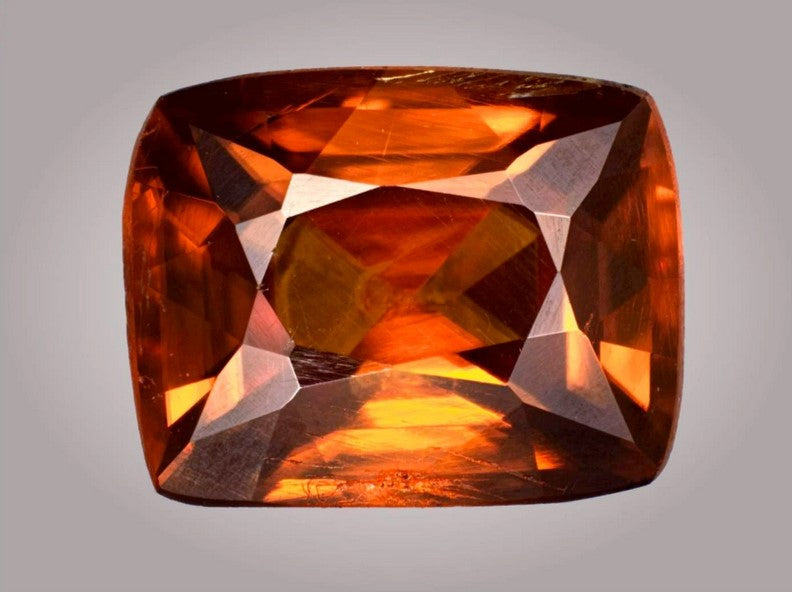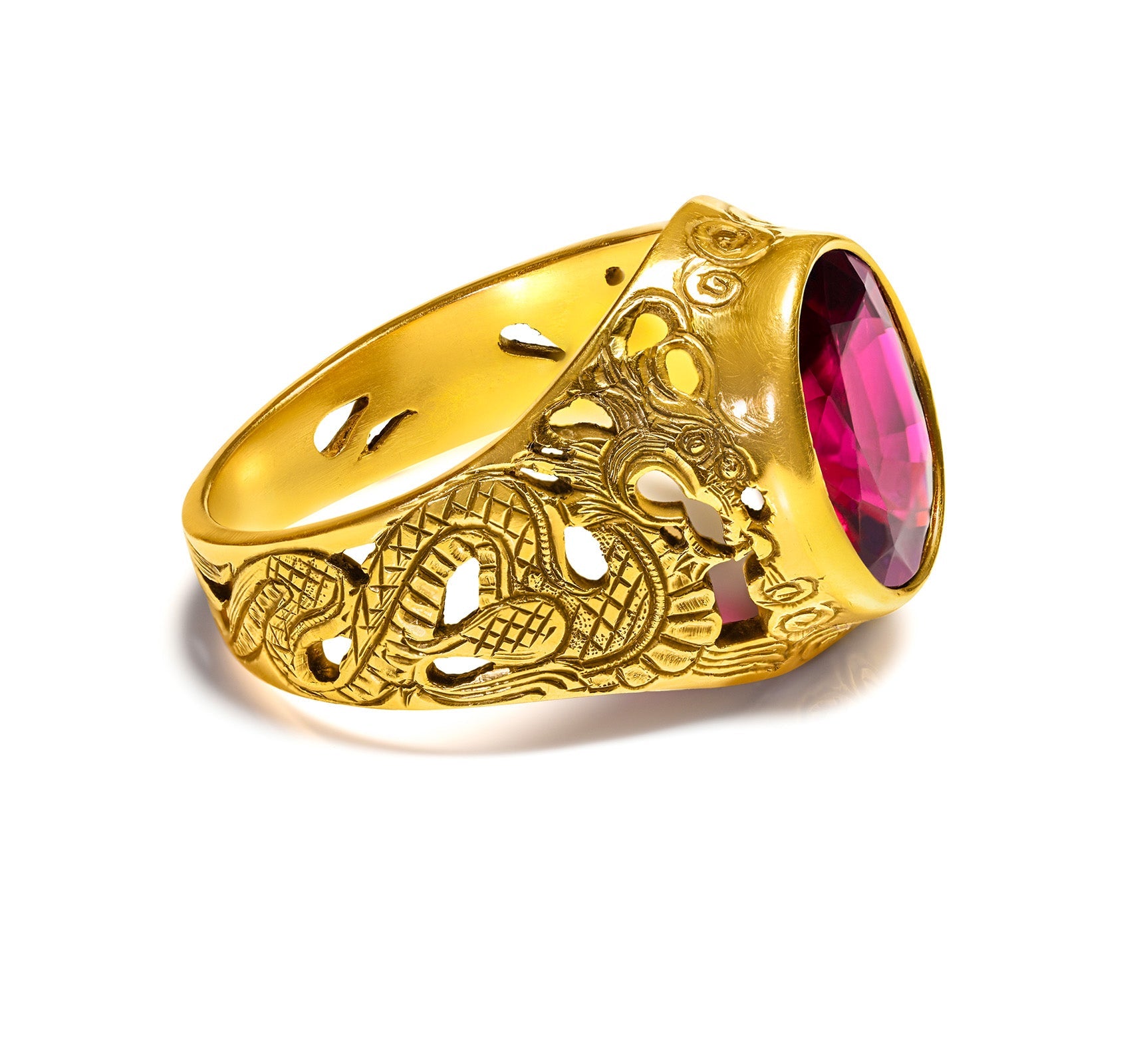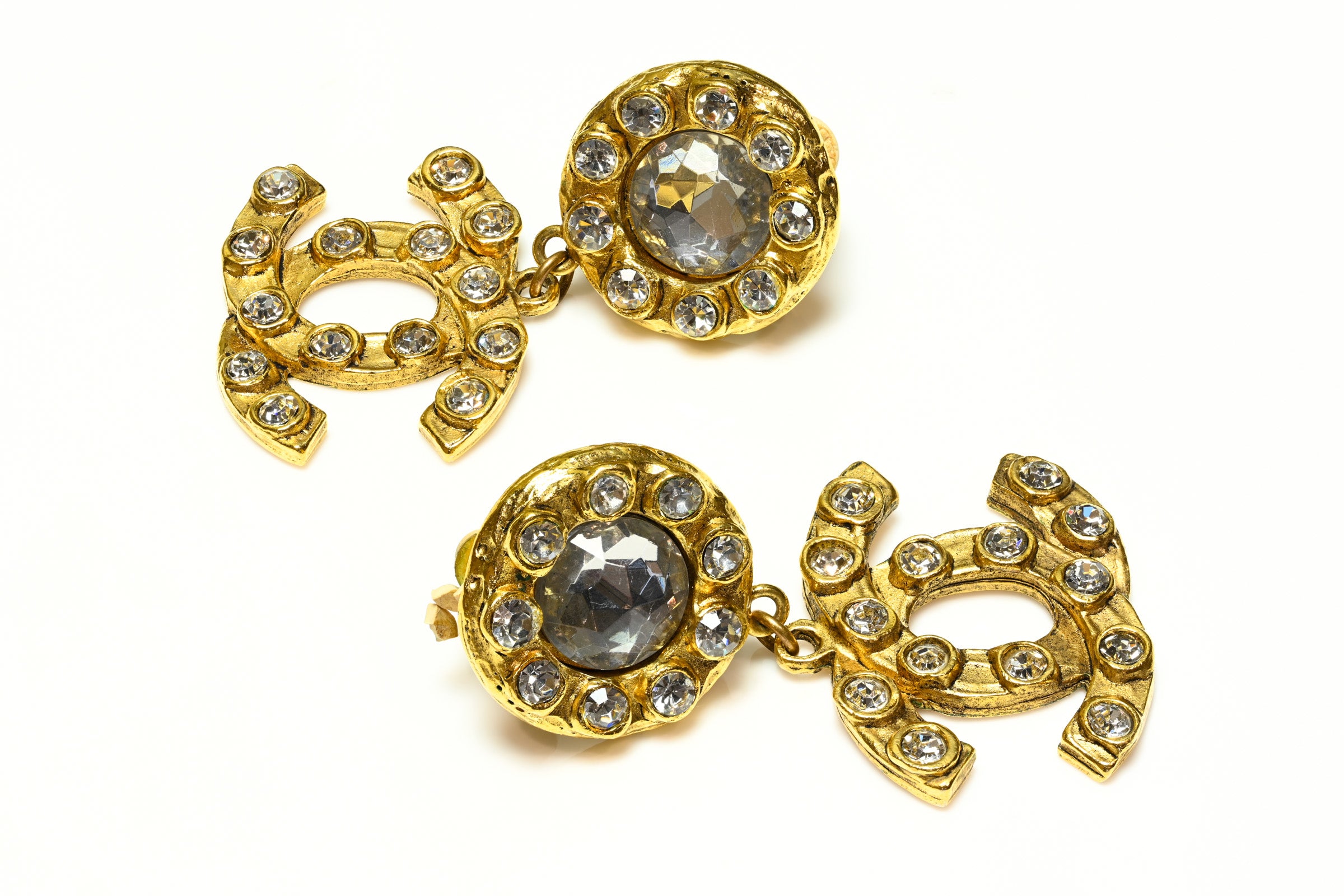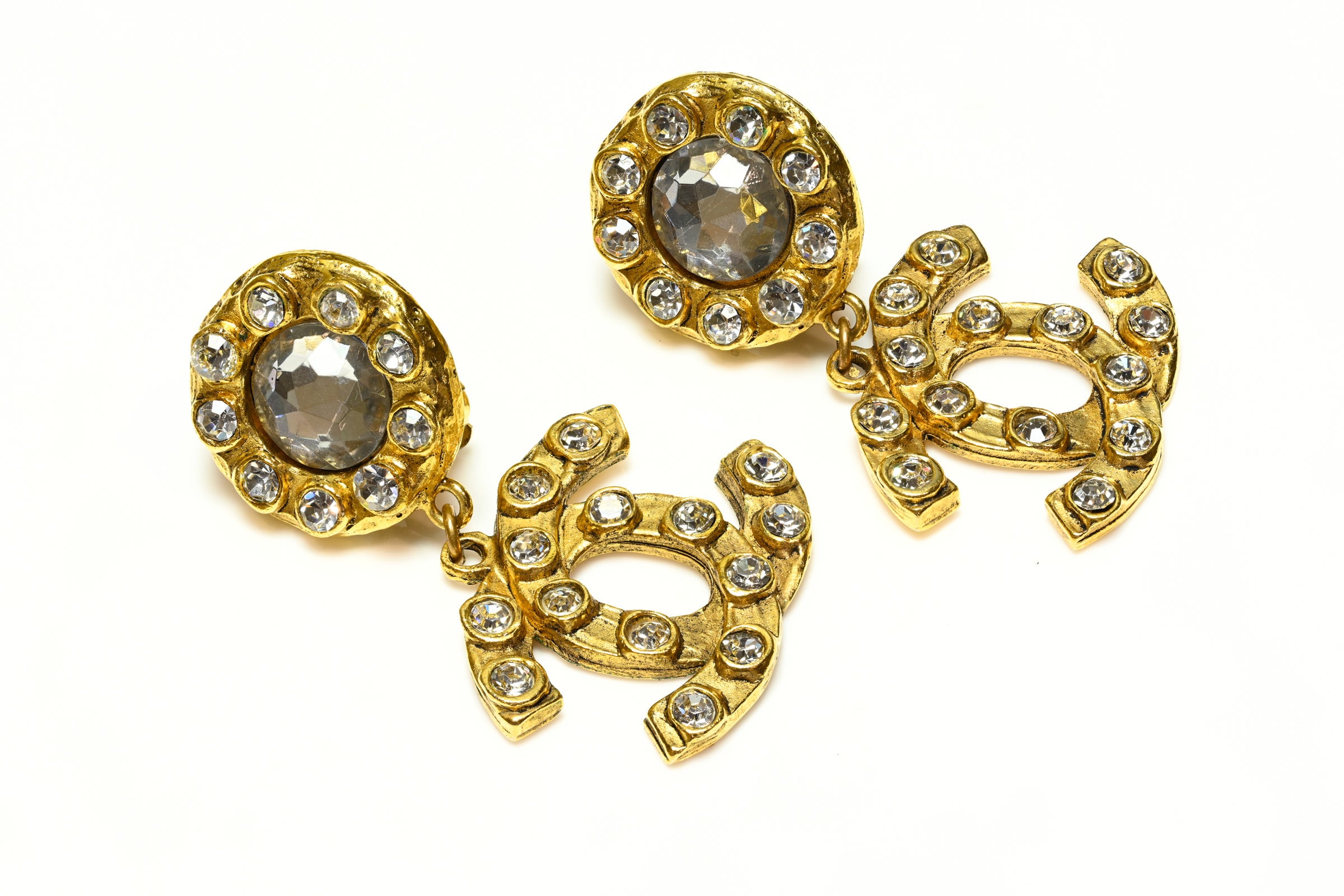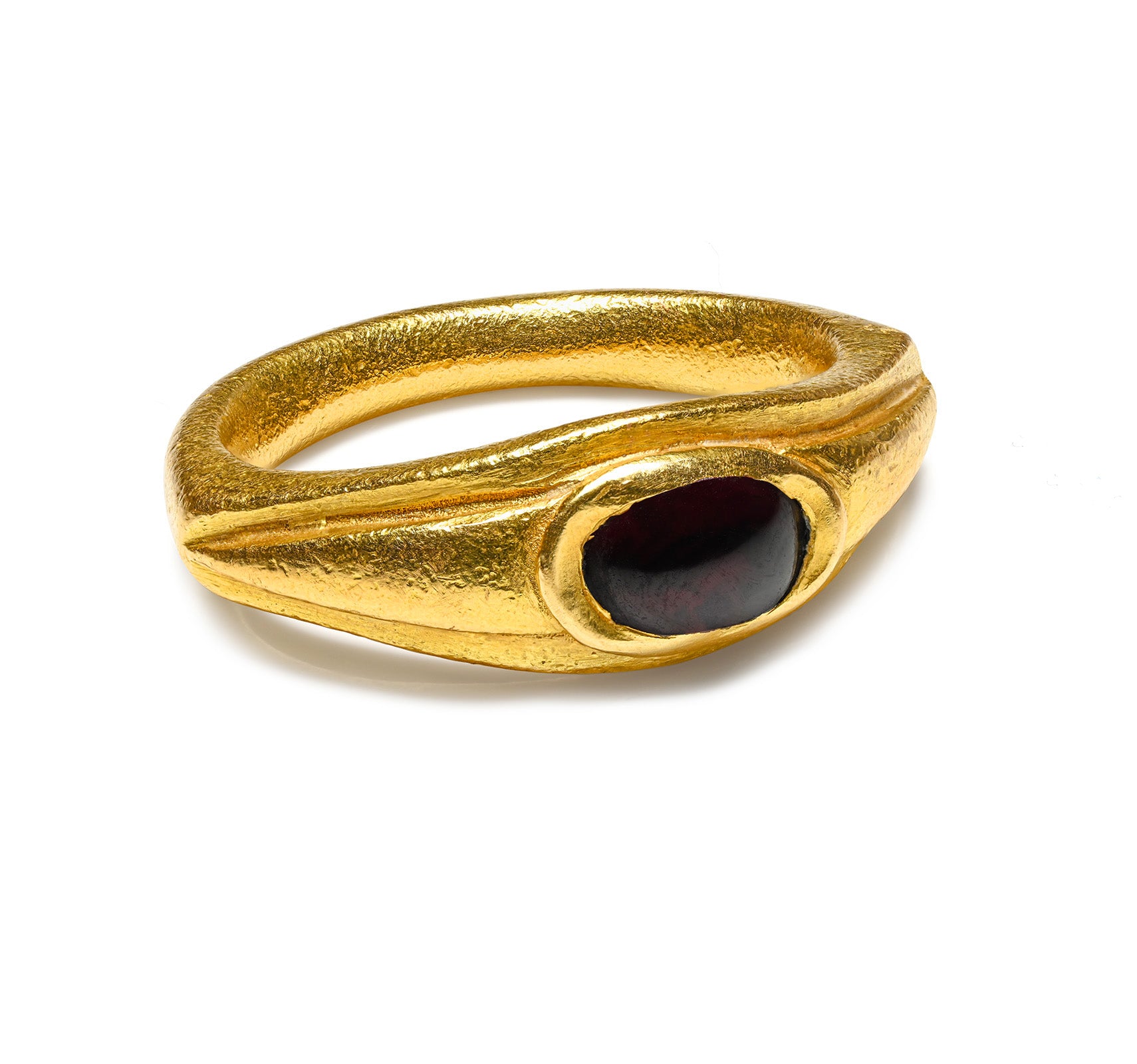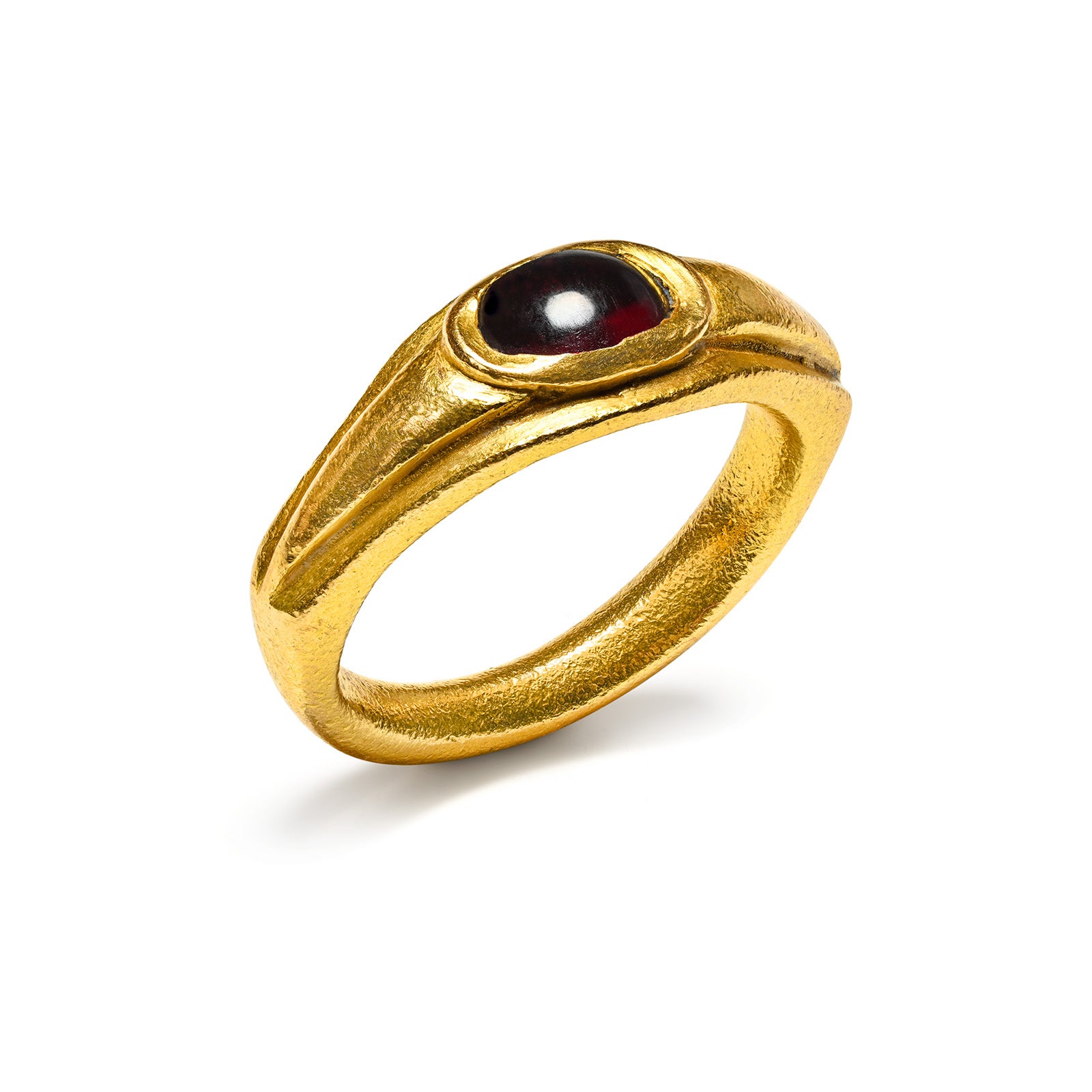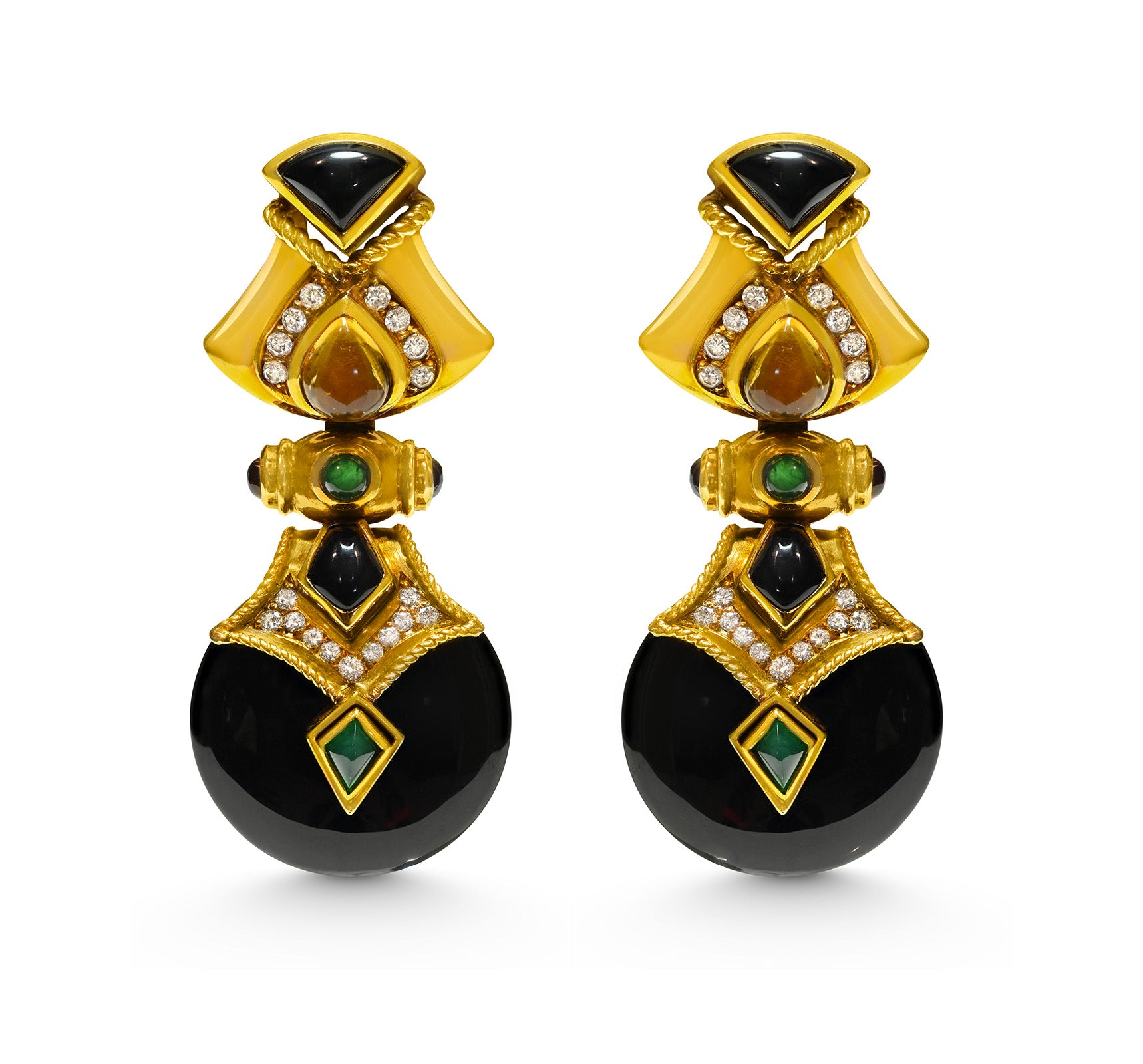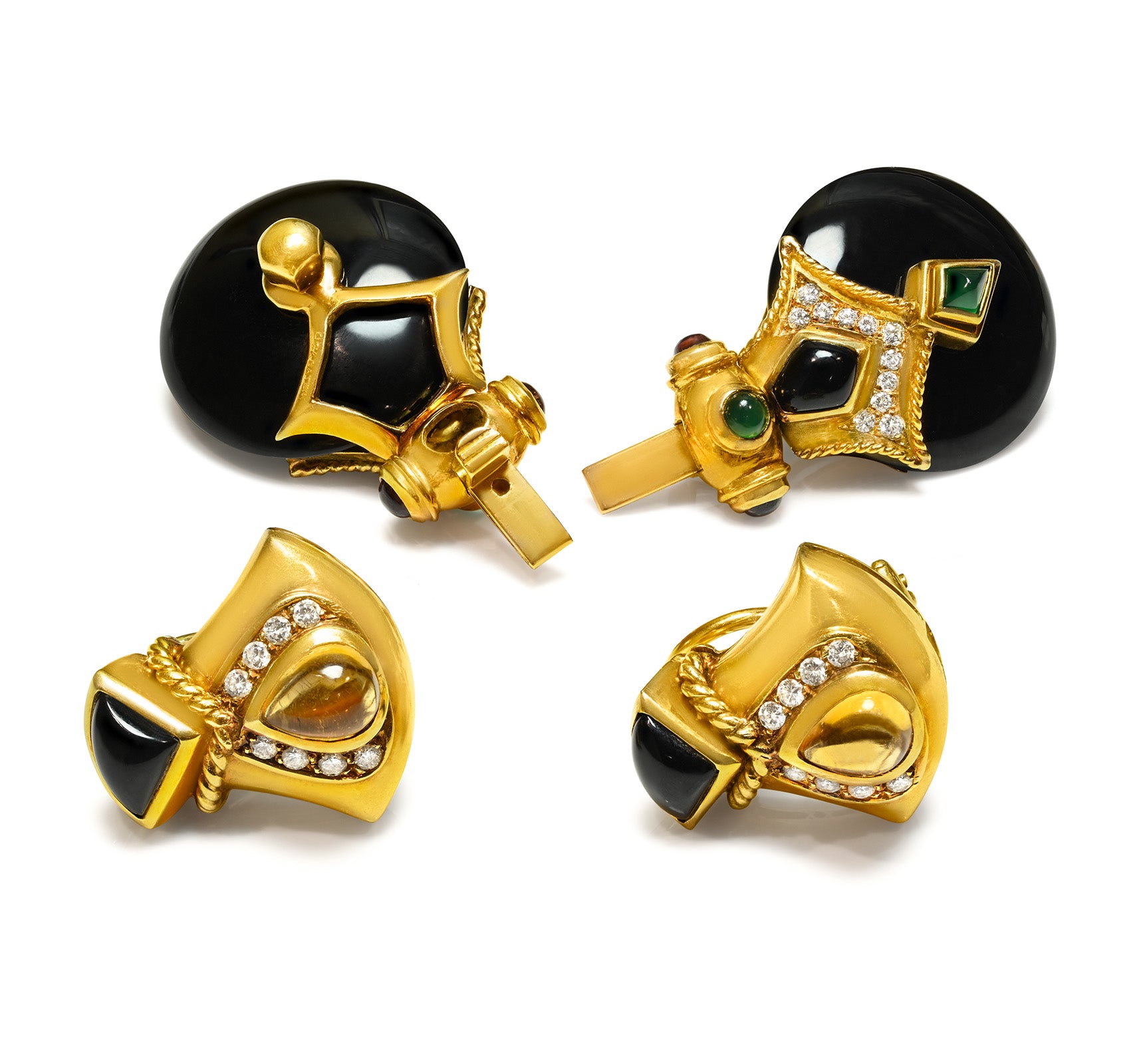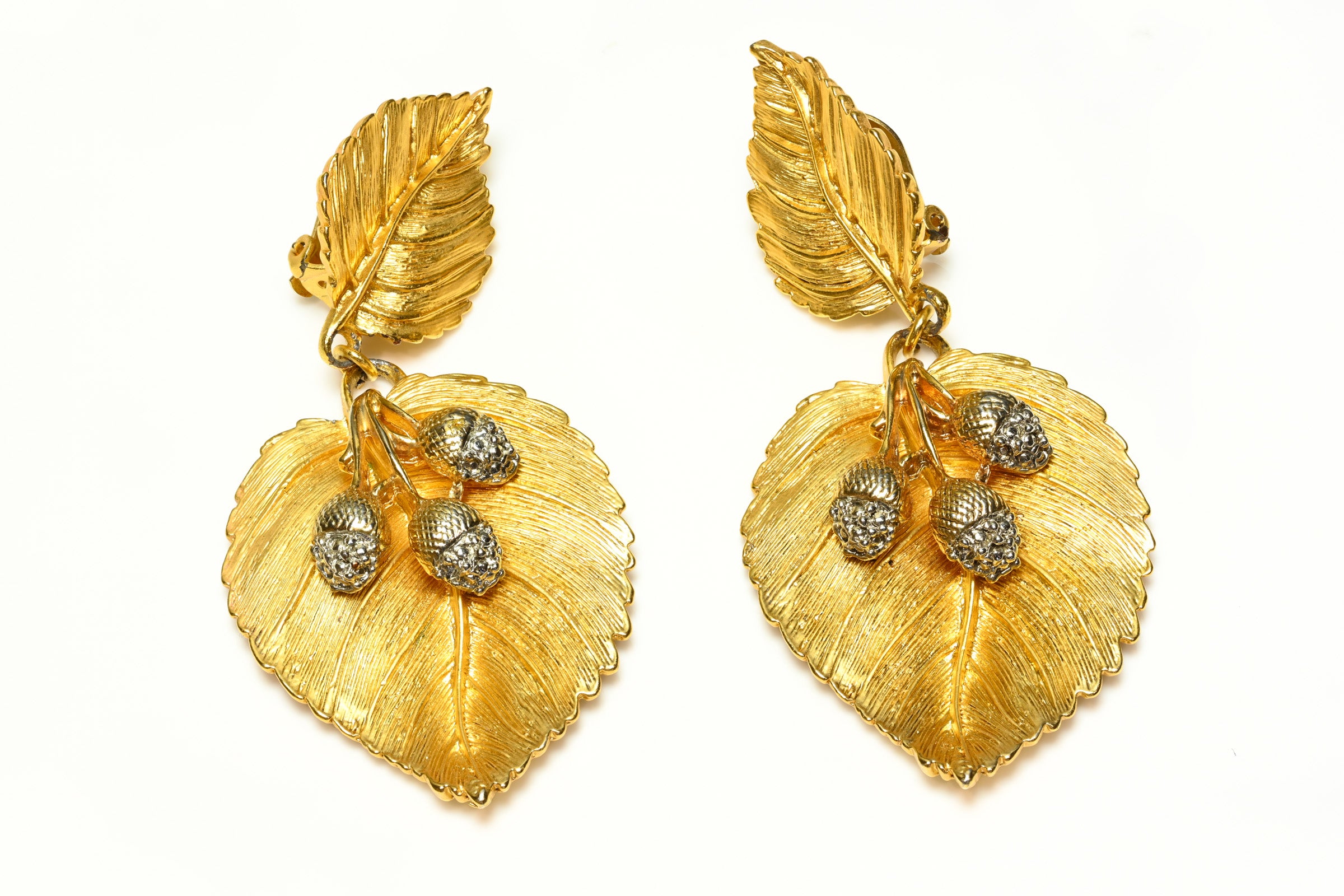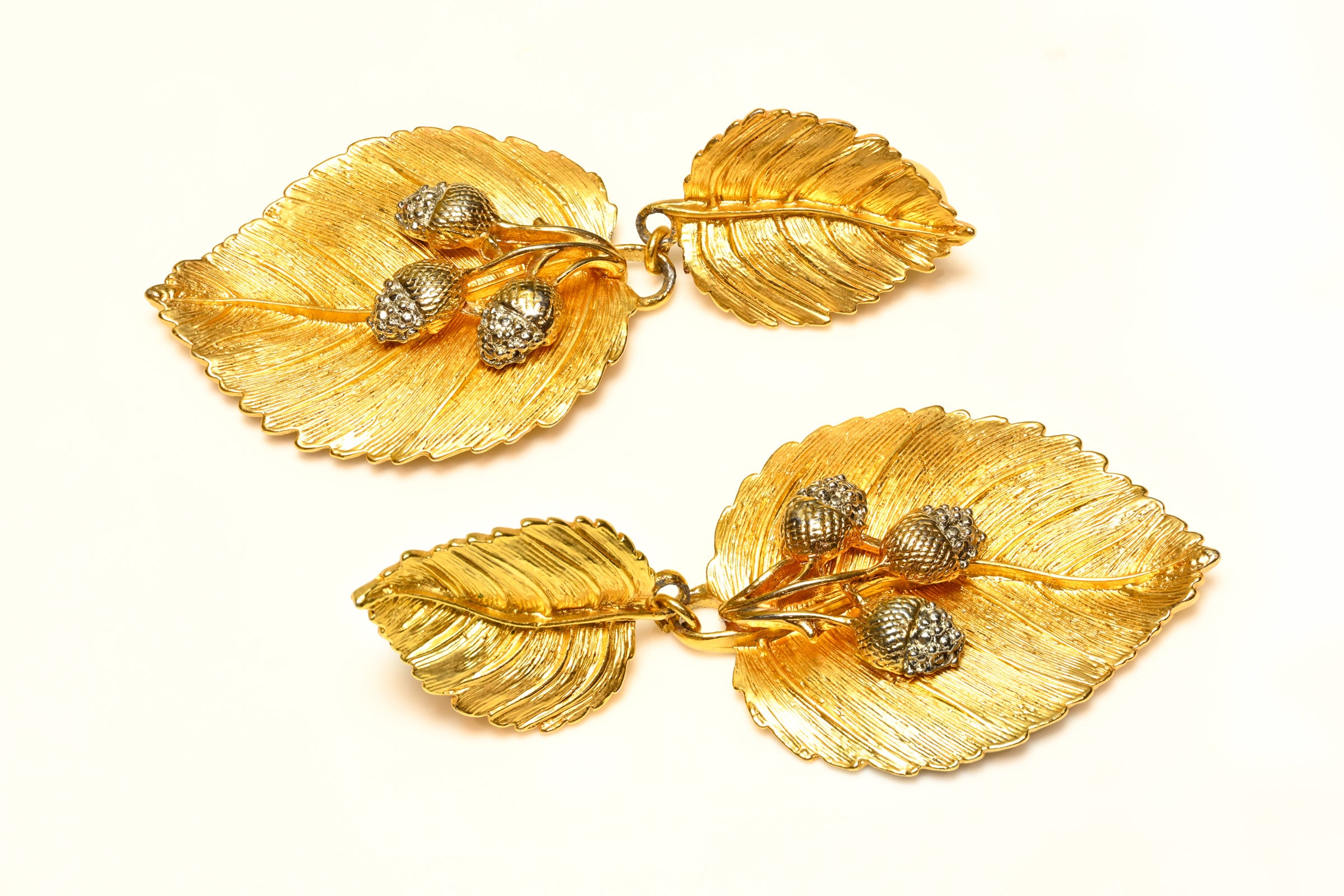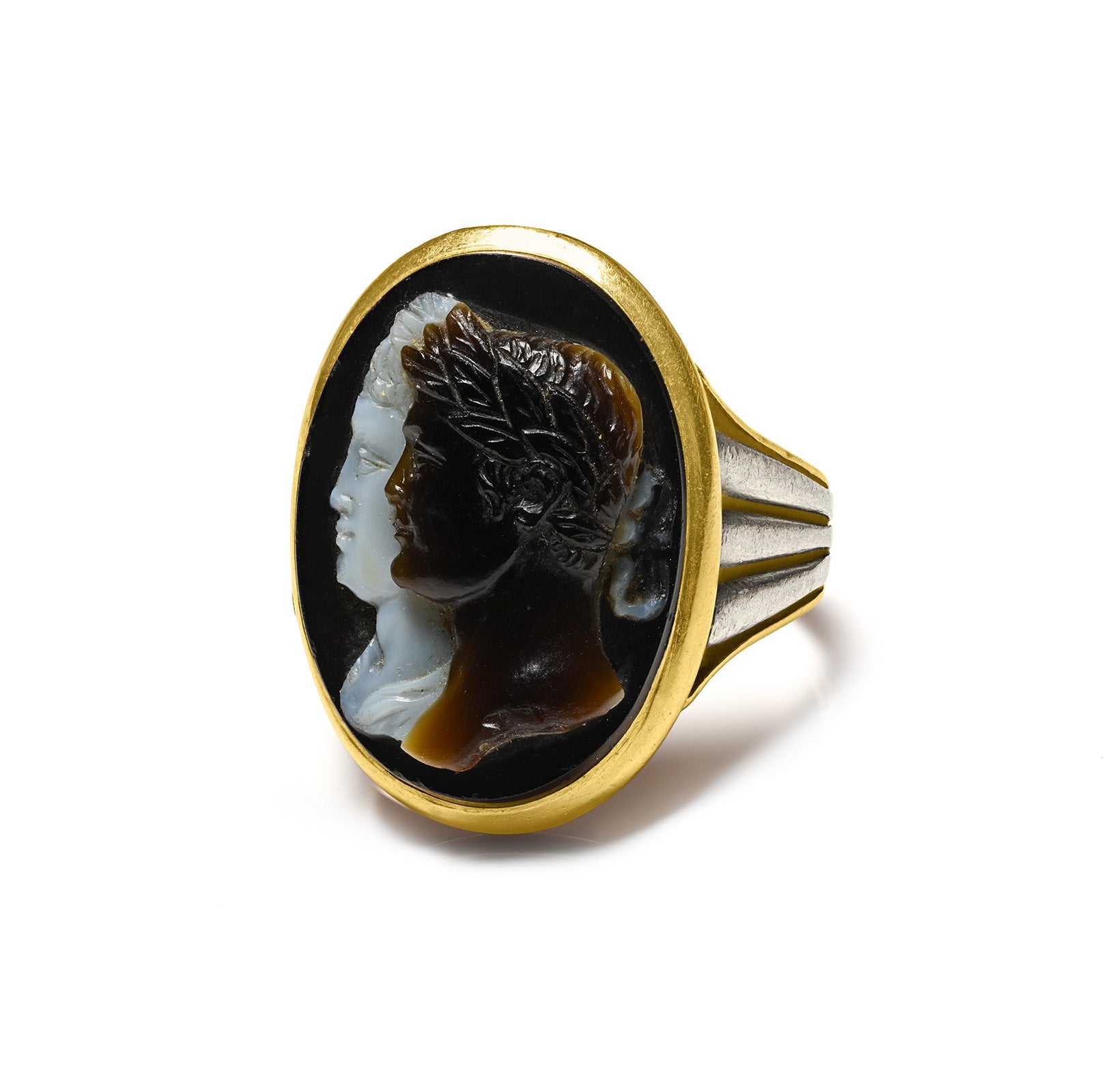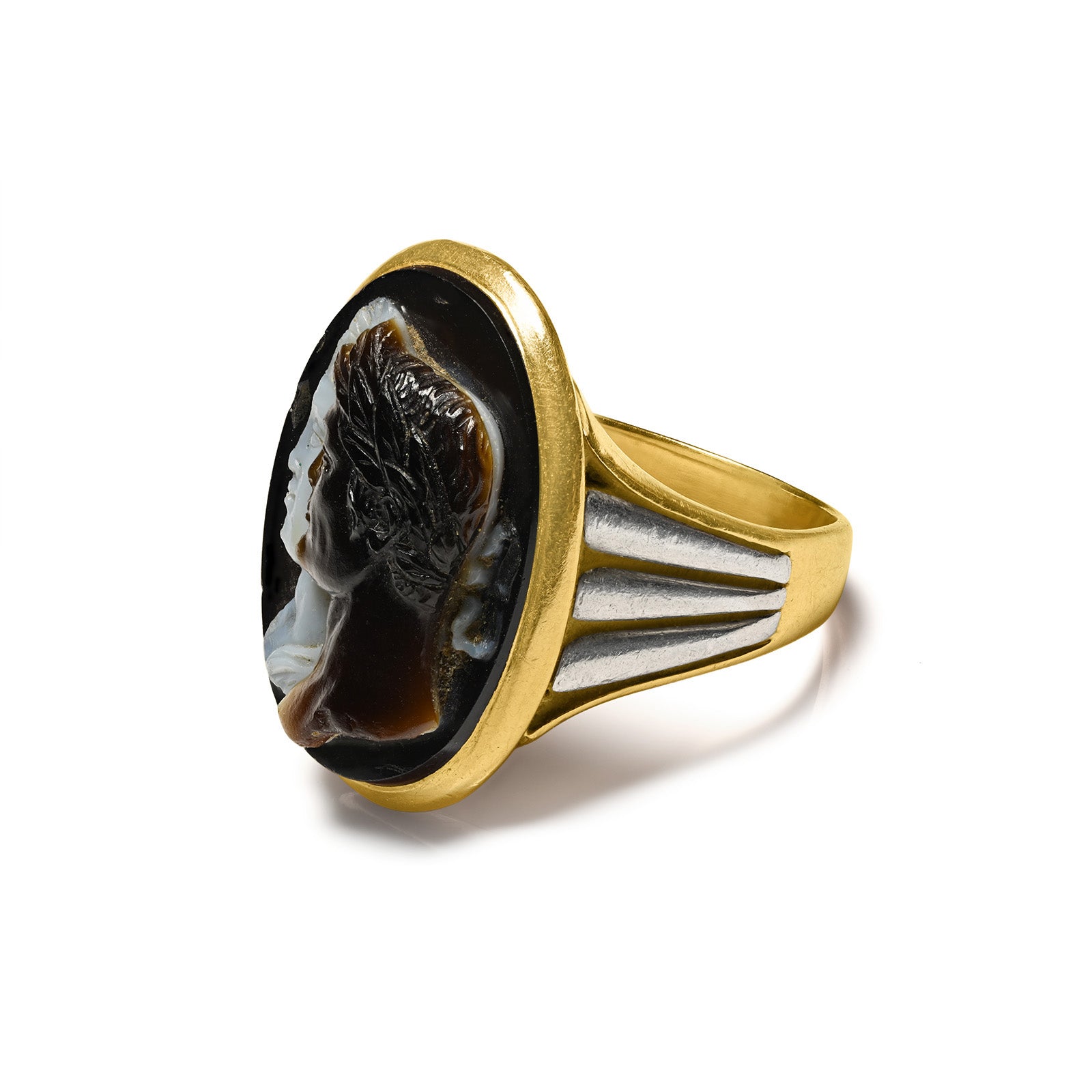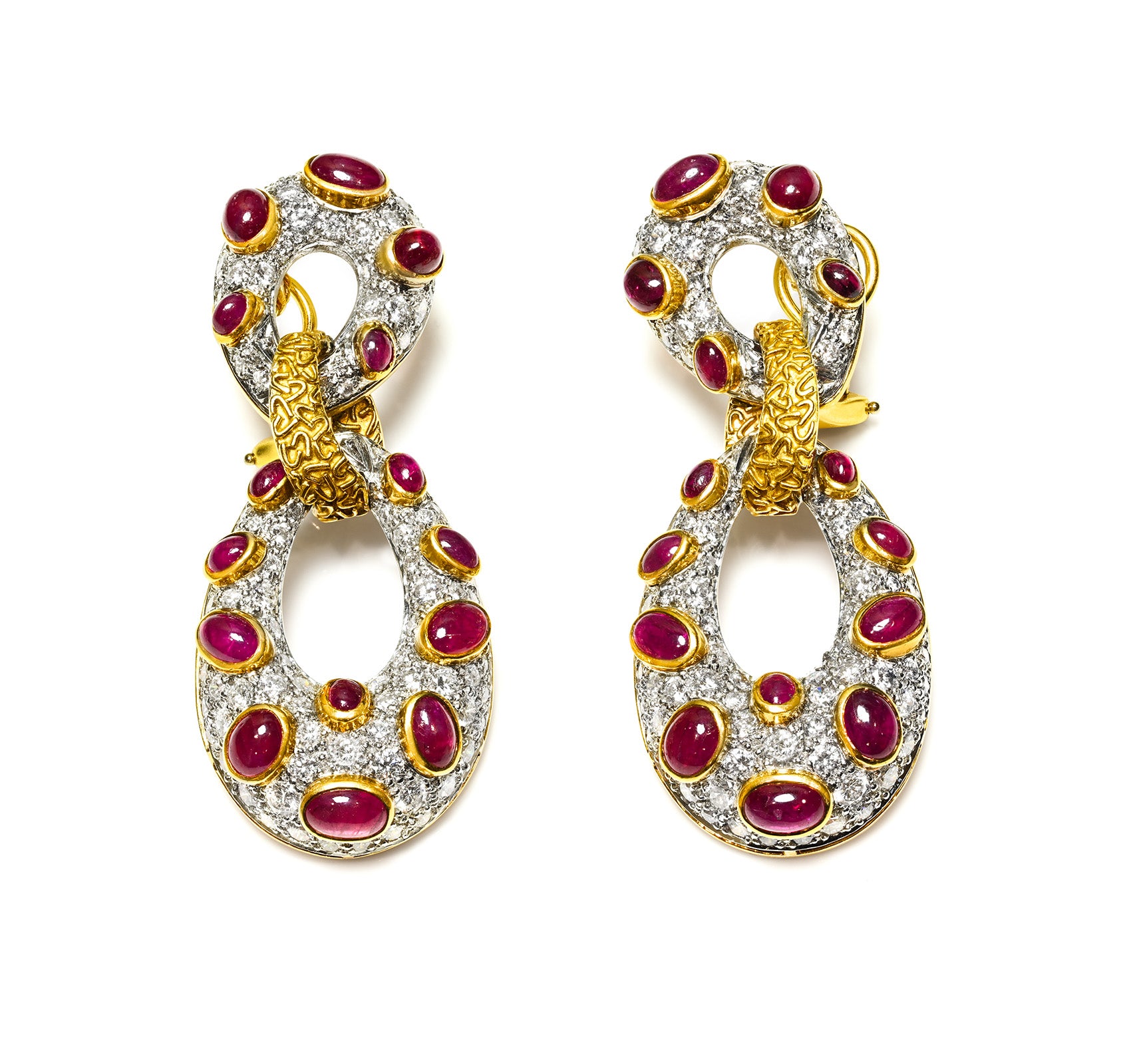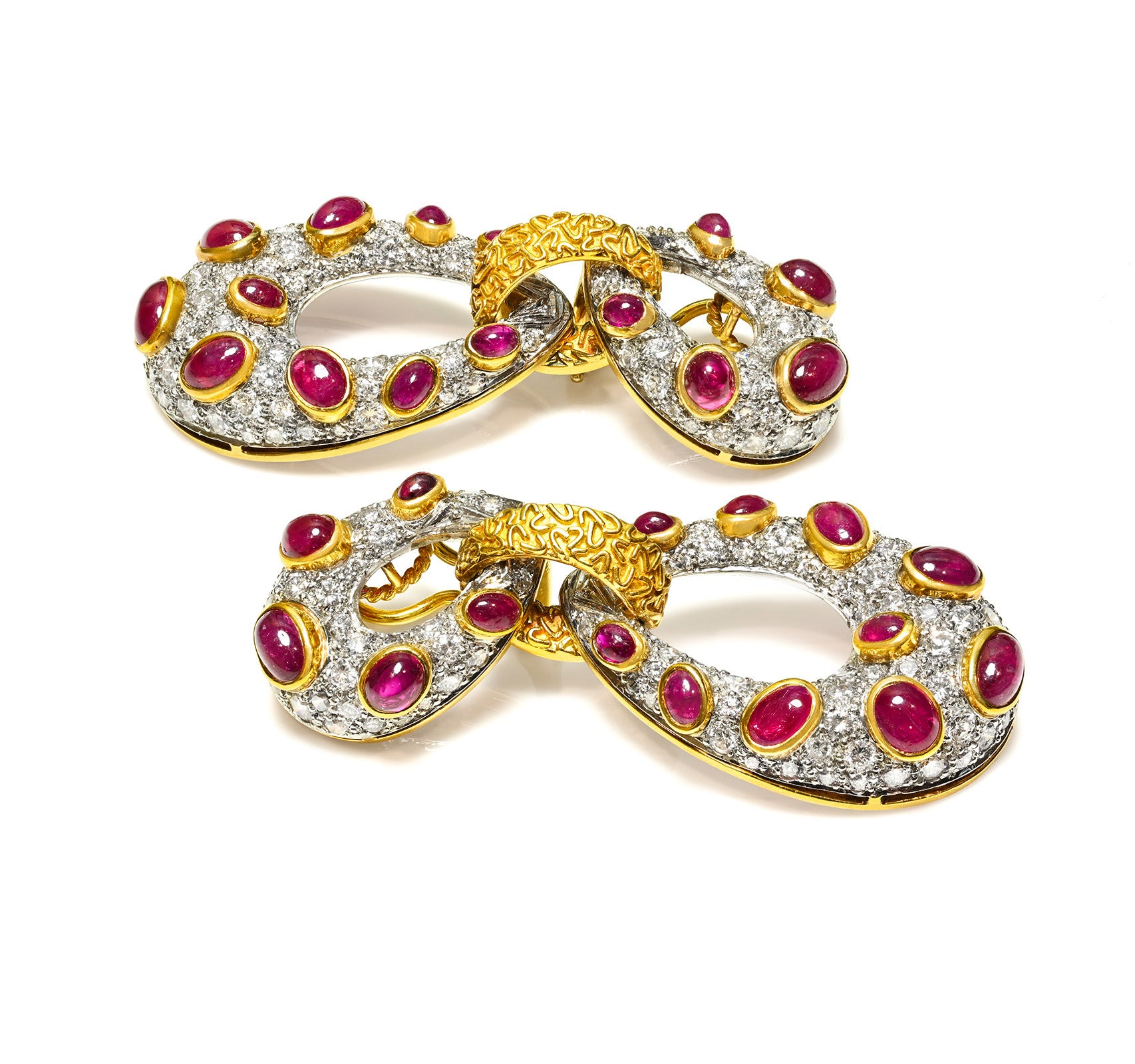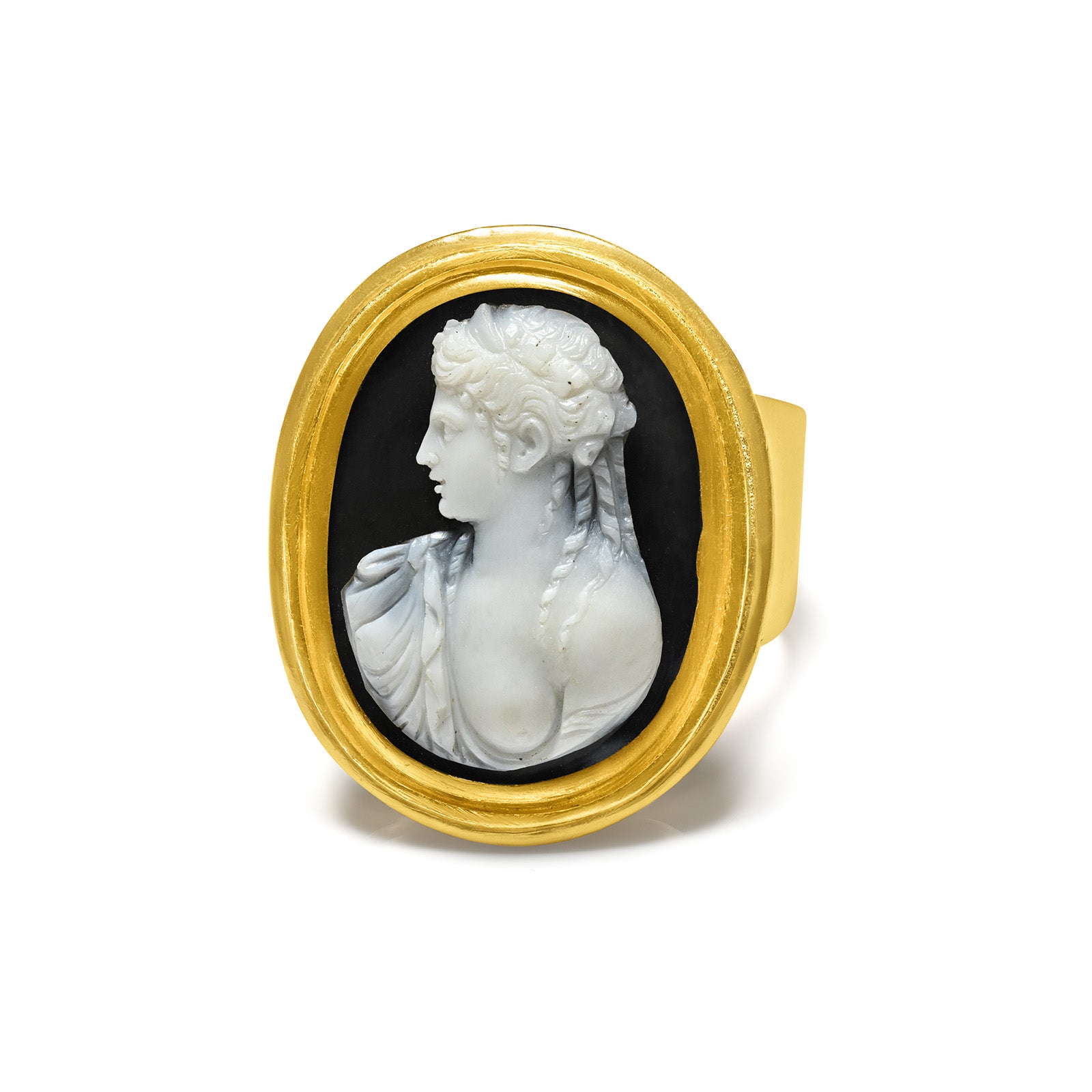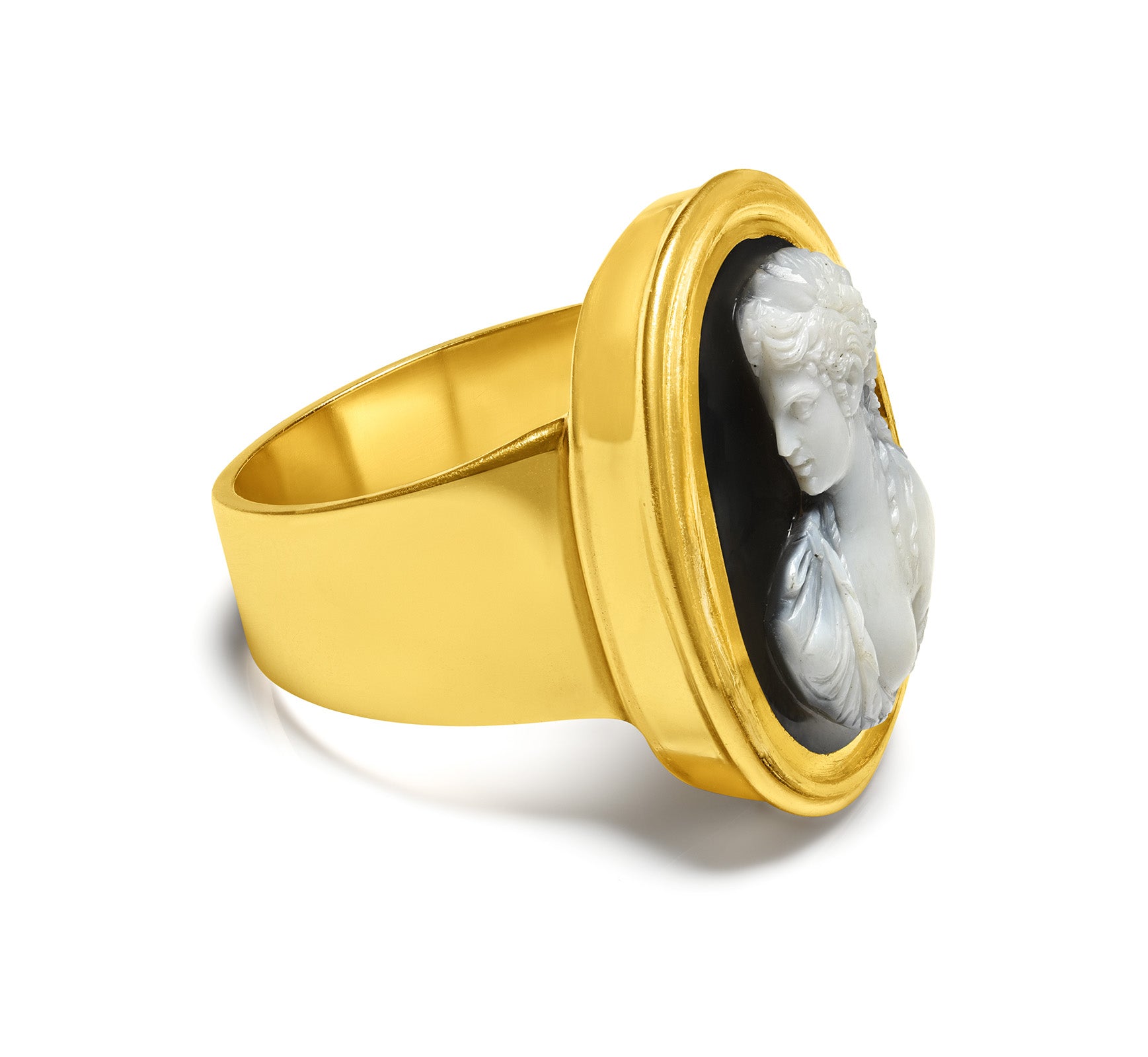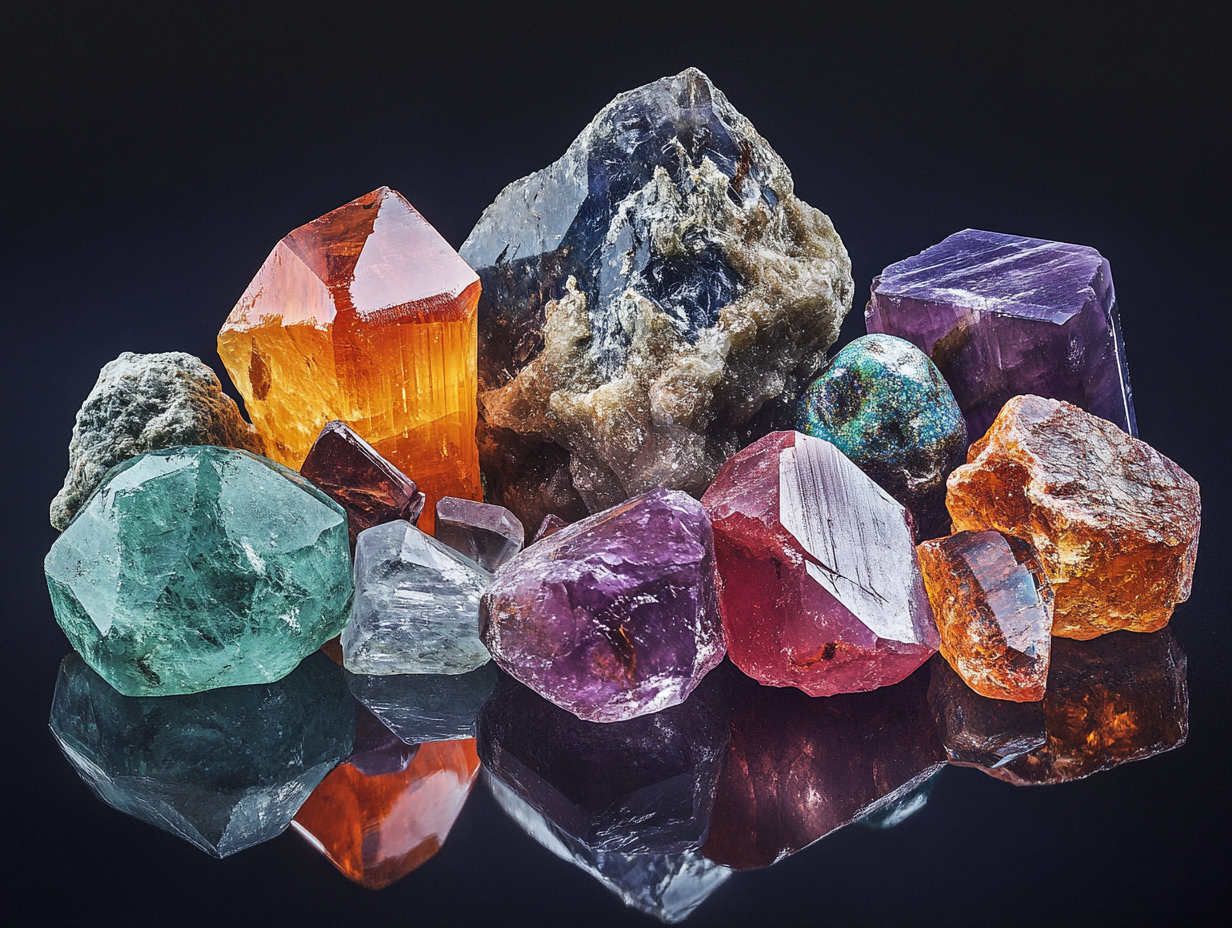
Beyond Diamonds: The World's Rarest Gemstones
When we think of gemstones, diamonds often come to mind as the pinnacle of value and desirability. However, there exists a fascinating array of rare and extraordinarily valuable gemstones that rival, or even surpass, diamonds in rarity.
One of these, which we’ve explored in a previous article, is the enigmatic Kyawthuite. Known as the rarest gemstone in the world, Kyawthuite is also one of the most mysterious minerals ever discovered.
Following this exceptional gemstone, a select group of rare and expensive stones takes center stage:
- Painite
- Grandidierite
- Taaffeite
- Musgravite
- Jeremejevite
- Serendibite
- Red Beryl (also known as Bixbite)
In this article, we’ll delve into the stories and characteristics of these extraordinarily rare and valuable gemstones, each as exclusive and unique as the next.
1. Painite: A Gemstone of Exceptional Rarity
Painite is widely recognized as one of the rarest gemstones on Earth—a true marvel of nature with a compelling story and exceptional properties.
First discovered in the 1950s, this gemstone continues to captivate collectors, gemologists, and jewelry enthusiasts worldwide.
Painite is a complex borate mineral that includes elements such as calcium, zirconium, aluminum, and iron. It was initially discovered by British gemologist Arthur Charles Davy Pain in Myanmar (formerly Burma).
Although the mineral was originally mistaken for spinel due to its color, subsequent analysis revealed it to be an entirely new and unique mineral.

Characteristics of Painite
Painite is distinguished by its striking color variations, which range from reddish-brown to orange, and occasionally pink or deep red. These hues result from trace impurities of iron and titanium within its structure.
Key characteristics of Painite include:
- Hardness: Rated 8 on the Mohs scale, making it durable enough for use in jewelry.
- Refractive Index: Painite’s high refractive index enhances its brilliance when expertly cut.
- Density: Approximately 4.01 g/cm³, contributing to its solid and substantial feel.
- Fluorescence: Under ultraviolet light, Painite may exhibit a subtle orange fluorescence.
Painite’s Exceptional Rarity
Painite’s extraordinary rarity lies in its unique chemical composition, combining elements that are seldom found together in nature. Until the early 2000s, only a handful of specimens were known, most of which were displayed in museums.
Today, Myanmar, particularly the Mogok region renowned for its rare gemstone deposits, remains the primary source of Painite.
Although some additional deposits have been discovered, Painite continues to be one of the rarest gemstones in the world. Its exclusivity is further amplified by the challenges of extraction and the limited availability of deposits.
Painite in Jewelry
Despite its impressive hardness and stunning appearance, Painite’s extreme rarity often relegates it to collectors' pieces or museum exhibits rather than widespread use in jewelry.
When used in jewelry, Painite gemstones are typically faceted—a process requiring exceptional craftsmanship to highlight the gem’s natural beauty while minimizing material loss.
Value and Collectability
Painite’s value is as remarkable as its rarity. Prices can range from $20,000 to $60,000 per carat, with particularly fine specimens commanding even higher prices.
The stone’s worth is influenced by factors such as size, color intensity, quality, and transparency. Larger stones with vibrant hues and minimal inclusions are the most prized.
Painite is not just a gemstone—it’s a symbol of exclusivity, sought after by collectors and connoisseurs worldwide. Its rarity and captivating beauty make it one of the most desirable treasures in the world of gemology.
If you’re ever fortunate enough to admire or own a piece of Painite, you’ll be holding a unique fragment of geological history in your hands.
2. Grandidierite: A Rare and Fascinating Jewel of Nature
Grandidierite is a remarkably rare and valuable gemstone that captivates with its striking color and exceptional properties.
First discovered in Madagascar, this gem has become a symbol of exclusivity, highly coveted by collectors and jewelry enthusiasts alike. Belonging to the borosilicate group of minerals, Grandidierite is composed of aluminum, magnesium, and iron.
It was first identified in 1902 in Madagascar and named in honor of Alfred Grandidier, the French explorer and naturalist celebrated for his extensive studies of the island's unique fauna and flora.
Occupying a special place in the world of gemology, Grandidierite is revered for its combination of color, hardness, and optical brilliance.

Grandidierite - Credit: American-thai via Wikimedia Commons
Characteristics of Grandidierite
Grandidierite is best known for its distinctive hues, which range from deep blue-green and blue-gray to subtle greenish tones. These variations are influenced by the amount of iron in its chemical structure.
Key characteristics of Grandidierite include:
- Hardness: Rated 7 to 7.5 on the Mohs scale, making it durable enough for use in jewelry.
- Refractive Index: Between 1.590 and 1.623, imparting a mesmerizing luster to the gem.
- Density: Approximately 2.85 g/cm³, contributing to its solid yet lightweight feel.
- Pleochroism: Displays a remarkable optical effect, showing different colors—green, blue, and yellow—when viewed from various angles.
Sources and Rarity
Madagascar remains the primary source of Grandidierite, particularly in the southern region near Tranomaro. While small deposits have been found in other locations, such as Sri Lanka and India, these are insignificant compared to global demand.
Grandidierite’s extreme rarity stems from the precise geological conditions required for its formation, involving rare chemical elements and specific geothermal processes.
Deposits are both small and scattered, and the extraction process is complicated by the mineral's hardness and structural properties.
A Rare Jewel in the World of Gemology
Most Grandidierite specimens are opaque or translucent, with transparent stones suitable for faceting being exceedingly rare.
This scarcity, coupled with the gemstone’s vibrant hues and unique optical effects, makes Grandidierite one of the most sought-after gemstones in the world. Its exclusivity ensures its place as a true treasure of nature.
Grandidierite in Jewelry
Thanks to its impressive hardness and captivating beauty, Grandidierite is a gemstone suitable for luxury jewelry.
However, the extreme rarity of transparent stones significantly limits its use, with most specimens remaining prized items in private collections or museums.
When incorporated into jewelry, Grandidierite is often featured in rings, pendants, or brooches, where its striking blue-green hue and remarkable optical effects can take center stage.
Value and Pricing
The value of Grandidierite varies greatly depending on its quality and transparency. Opaque or translucent stones are more affordable, but transparent, gem-quality specimens command exceptionally high prices.
On average, a transparent Grandidierite can range from $5,000 to $50,000 per carat, with larger stones of intense color fetching even higher premiums.
A Treasure of Nature
Grandidierite is truly a treasure of nature, captivating collectors and gem enthusiasts with its rarity and beauty. Its vibrant blue-green shades, fascinating pleochroism, and durability make it ideal for unique and high-end jewelry.
However, its scarcity ensures that it remains primarily a symbol of exclusivity, often found in private collections or museum exhibits rather than mainstream jewelry pieces.
3. Taaffeite: Another Exceptionally Rare Gemstone
Taaffeite is an extraordinarily rare and enigmatic gemstone with a captivating history, placing it among the most valuable and exclusive gems in the world.
Discovered by chance, Taaffeite has intrigued gemologists and collectors for decades due to its unique blend of beauty and rarity.

Taaffeite - Credit: DonGuennie (G-Empire The World Of Gems) via Wikimedia Commons
Characteristics of Taaffeite
Taaffeite stands out for its remarkable physical and optical properties, often described as a gemstone of subtle elegance.
Its main characteristics include:
- Color: Taaffeite’s hues range from colorless to delicate shades of violet, pink, lavender-red, or bluish-gray. These subtle tones are influenced by trace amounts of iron and chromium in its composition.
- Hardness: Rated 8 to 8.5 on the Mohs scale, making it durable enough for use in jewelry.
- Refractive Index: Between 1.719 and 1.730, contributing to its brilliant luster.
- Pleochroism: Displays the fascinating optical effect of pleochroism, where the stone reveals different colors when viewed from varying angles.
- Rarity: Considered one of the rarest known minerals, even less common than diamonds.
Sources and Deposits
Taaffeite deposits are extremely rare and geographically limited. The most significant sources include:
- Sri Lanka: The primary source, where Taaffeite is found in alluvial deposits alongside spinel and corundum.
- Myanmar (Burma): The Mogok region is known for producing high-quality Taaffeite.
- China and Tanzania: More recent sources with limited deposits.
Because Taaffeite typically occurs as a by-product in alluvial deposits, often mistaken for spinel, its identification requires meticulous analysis.
A Remarkable Discovery
Taaffeite is a complex oxide of beryllium, magnesium, and aluminum, first identified in 1945 by Irish gemologist Richard Taaffe.
Remarkably, the gemstone was discovered already cut, making it unique in the history of gemology. Initially mistaken for spinel, further analysis confirmed that Taaffeite was an entirely new and distinct mineral.
Its discovery as a cut gemstone highlights its extraordinary rarity and underscores its significance in the world of gemology.
Why is Taaffeite So Rare?
Taaffeite's exceptional rarity arises from several unique factors:
- Unique Chemical Structure: It is one of the few gemstones that combines magnesium, aluminum, and beryllium—a rare combination in nature.
- Difficulty of Identification: Taaffeite is often mistaken for spinel due to their similar properties, and many specimens likely remain unidentified.
- Limited Deposits: Found only in small, sporadic quantities, Taaffeite’s occurrences are too rare to allow systematic mining.
Can Taaffeite Be Used in Jewelry?
Yes, Taaffeite can be used in jewelry, but its extreme rarity limits its applications. Thanks to its hardness, it is well-suited for rings, necklaces, or earrings.
However, jewelry pieces featuring Taaffeite are almost exclusively custom-made or reserved for private collections.
Value and Pricing
The price of Taaffeite varies significantly based on size, quality, and color. Smaller or less intensely colored stones may start at approximately $2,500 per carat, while gem-quality stones with exceptional clarity and intense color can exceed $35,000 per carat.
A Symbol of Exclusivity
With its delicate beauty and intriguing history, Taaffeite is one of the rarest and most precious gemstones in the world. As a true natural treasure, it embodies a sense of exclusivity and remains highly coveted by collectors and connoisseurs alike.
4. Musgravite: One of the World's Rarest and Most Valuable Gemstones
First discovered in 1967 in the Musgrave Mountains of Australia, Musgravite is an extraordinary gemstone, celebrated as one of the rarest and most valuable gems in existence.
Its captivating beauty, combined with a unique chemical composition, makes it a true symbol of exclusivity and refinement. The stone takes its name from the location of its initial discovery.
Musgravite belongs to the oxide group of minerals, with a chemical composition comprising beryllium, magnesium, and aluminum (Be(Mg,Fe,Zn)₂Al₆O₁₁₂). Initially mistaken for Taaffeite, subsequent analysis confirmed it as a distinct mineralogical species.

Musgravite - Credit: DonGuennie (G-Empire The World Of Gems) via Wikimedia Commons
Characteristics of Musgravite
Musgravite is prized not only for its rarity but also for its remarkable optical and physical properties:
- Color: Ranges from light grayish-green to shades of purple, olive green, brown, or light gray, depending on trace elements such as iron and zinc.
- Hardness: Rated 8 to 8.5 on the Mohs scale, making it suitable for use in jewelry.
- Refractive Index: Between 1.717 and 1.739, contributing to its exceptional brilliance.
- Pleochroism: Displays the optical phenomenon of pleochroism, revealing different colors when viewed from various angles.
- Clarity: Most Musgravite specimens are included, and stones with exceptional clarity are exceedingly rare and valuable.
Sources and Deposits
Musgravite deposits are incredibly limited, and mining is a challenging process. The most significant sources include:
- Musgrave Mountains, Australia: The original discovery site.
- Sri Lanka: Known for producing gem-quality Musgravite.
- Myanmar (Burma): An important source of rare stones.
- Tanzania: Features more recently discovered deposits.
- Madagascar, Greenland, and Antarctica: Remote and less significant sources.
Because Musgravite is often found in mixed deposits alongside Taaffeite and other minerals, its identification requires advanced gemological testing. These rigorous procedures ensure its distinction as one of the rarest treasures in the gemological world.
Why is Musgravite So Rare?
The exceptional rarity of Musgravite stems from several unique factors:
- Unique Chemical Composition: This mineral requires highly specific geological conditions to form, making it exceptionally uncommon.
- Limited Deposits: Musgravite deposits are rare, and even in known locations, production remains extremely low.
- Confusion with Other Minerals: Often mistaken for Taaffeite due to similar properties, many Musgravite specimens likely remain unidentified.
- Rare Gemological Quality: Transparent stones with minimal inclusions are particularly scarce and highly sought after.
Musgravite in Jewelry
Musgravite is highly prized in the jewelry industry, but its extreme rarity limits its use to custom creations or high-end luxury jewelry. Its durability and brilliance make it suitable for rings, pendants, and earrings.
However, most Musgravite specimens are held in private collections or displayed in museums, and jewelry featuring this gemstone is exceedingly rare and valuable.
Value and Pricing
Musgravite ranks among the most expensive gemstones in the world. Its value varies significantly depending on factors like quality, size, and clarity:
- Opaque or Included Stones: Typically priced at over $3,000 per carat.
- High-Quality Transparent Stones: Range from $35,000 to $100,000 per carat.
- Exceptional Specimens: Large, intensely colored, and inclusion-free gems often exceed these amounts and are regarded as unparalleled rarities.
A Gemstone of Unparalleled Rarity
Musgravite’s allure lies in its combination of extreme rarity, unique beauty, and the challenges associated with identifying and mining it.
With its hardness and high refractive index, it offers a brilliance comparable to other premier gemstones like diamonds and sapphires.
This exceptional combination of attributes cements Musgravite’s status as one of the most exclusive and desirable gemstones in the world.
5. Jeremejevite: A Rare and Enchanting Gemstone
Jeremejevite is among the world’s rarest and most captivating gemstones, admired by collectors and gem enthusiasts for its delicate beauty and extreme scarcity.
First discovered in 1883 in Russia’s Altai Mountains, Jeremejevite is an aluminum borate mineral named after Russian mineralogist Pavel Jeremejev, who made significant contributions to the study of rare minerals.
Renowned for its transparency, hardness, and varied hues, Jeremejevite possesses a unique charm. However, it remains one of the most inaccessible gemstones in the world.

Jeremejevit - Credit: DonGuennie (G-Empire The World Of Gems) via Wikimedia Commons
Characteristics of Jeremejevite
Jeremejevite is distinguished by its exceptional properties:
- Color: Found in a range of hues, from colorless to pale yellow, light blue, and deep blue, its coloration depends on impurities like iron or titanium.
- Transparency: The gem can be transparent or translucent, with a vitreous luster that enhances its sparkle.
- Hardness: Rated 6.5 to 7 on the Mohs scale, making it suitable for jewelry but requiring care to avoid scratches.
- Refractive Index: Between 1.640 and 1.653, imparting a distinctive yet delicate brilliance.
- Specific Gravity: Approximately 3.28 g/cm³, aiding in its identification.
Sources and Deposits
Jeremejevite is found in only a few locations worldwide, typically in specific geological environments conducive to the formation of aluminum borate minerals.
The most significant deposits include:
- Altai Mountains, Russia: The site of Jeremejevite’s original discovery, though production remains extremely limited.
- Erongo, Namibia: The primary source of gem-quality Jeremejevite, known for producing the most stunning blue specimens.
- Madagascar: A notable source of good-quality stones with excellent transparency.
- Myanmar (Burma): Produces small, transparent stones, though deposits are minimal.
- Tajikistan and Germany: Less significant sources that have occasionally yielded exceptional specimens.
A Gemstone of Unmatched Rarity
Jeremejevite’s enchanting colors and rarity make it a prized addition to any collection. While its accessibility is limited, the gem’s unique characteristics ensure its status as one of the most desirable treasures in the world of gemology.
Why is Jeremejevite So Rare?
The exceptional rarity of Jeremejevite stems from several key factors:
- Limited Deposits: Mining sites are few and produce only small quantities of material.
- Difficulty of Identification: Jeremejevite is often mistaken for other gemstones, such as topaz, due to similarities in color and transparency.
- Rare Gem Quality: Most specimens are opaque or translucent, with transparent stones suitable for polishing being exceptionally rare.
- Challenging Mining Conditions: Deposits are scattered and often located in difficult-to-access areas, complicating the extraction process.
Jeremejevite in Jewelry
While Jeremejevite’s hardness makes it suitable for jewelry, its extreme rarity limits its use.
Most stones remain collectors' items, but polished specimens are occasionally used in bespoke creations such as rings, pendants, or earrings.
However, due to its susceptibility to scratches and impacts, jewelry featuring Jeremejevite requires special care and protection to maintain its brilliance and longevity.
Value and Pricing
Jeremejevite ranks among the most expensive gemstones in the world, with prices varying based on size, color, and clarity:
- Small, Translucent-Matte Stones: Starting at approximately $2,000 per carat.
- Transparent Gem-Quality Stones: Typically priced between $5,000 and $15,000 per carat.
- Exceptional Specimens: Large stones with intense blue hues and exceptional clarity can command prices of up to $30,000 per carat, making them true rarities.
A Symbol of Luxury and Refinement
Jeremejevite’s rarity and beauty make it one of the most coveted gemstones in the world. Its unique optical and chromatic properties, combined with the intriguing history of its discovery, have solidified its status as a symbol of exclusivity and sophistication.
Discovered in remote locations and produced in extremely limited quantities, Jeremejevite epitomizes ultimate luxury. Though seldom used in jewelry, every piece featuring this gemstone is a masterpiece—an extraordinary treasure in the realm of fine gems.
6. Serendibite: A Gemstone of Legendary Rarity
Serendibite is an exceptionally rare and captivating gemstone, ranked among the rarest gems in the world.
First discovered in Sri Lanka, the gemstone derives its name from the island’s ancient name, Serendib, highlighting its exotic and mysterious origins.
This mineral is composed of calcium, magnesium, aluminum, boron, and silicon. Classified as a silicate-borate, Serendibite forms under highly specific geological conditions, typically in boron-rich metamorphic rocks.

Serendibite - Credit: DonGuennie (G-Empire The World Of Gems) via Wikimedia Commons
Characteristics of Serendibite
Serendibite is celebrated for its remarkable physical and optical properties, which give it a distinctive charm:
- Color: Found in shades ranging from dark blue-green and bluish-gray to petrol blue and black, with dark blue being the most sought-after color.
- Hardness: Rated 6.5 to 7 on the Mohs scale, making it durable enough for jewelry but requiring careful handling.
- Transparency: Varies from translucent to opaque, with transparent gem-quality stones being exceedingly rare.
- Luster: Displays a glassy luster that enhances its elegance.
- Refractive Index: Ranges between 1.76 and 1.78, contributing to its subtle brilliance.
Sources and Deposits
Serendibite deposits are incredibly rare and are found in only a handful of locations worldwide. The primary sources include:
- Sri Lanka: The site of the original discovery and still the most important source of gem-quality Serendibite.
- Myanmar (Burma): Known for more recent deposits that have yielded high-quality specimens.
- Madagascar: A minor but noteworthy source of Serendibite.
- Canada (Quebec): Small deposits have been identified, though they are gemologically unproductive and rarely yield specimens of significance.
A Rare Treasure
Serendibite’s unique composition, coupled with its rarity and striking colors, makes it one of the most fascinating gemstones in the world. Its limited availability ensures that Serendibite remains a symbol of exclusivity and a prized addition to any collection.
This extraordinary gemstone, with its dark and enigmatic beauty, truly embodies the allure of nature’s rarest treasures.
Why is Serendibite So Rare?
The rarity of Serendibite is due to several key factors:
- Limited Deposits: This gemstone is found in only a few locations worldwide, and even within these deposits, the quantity of material is extremely small.
- Specific Formation Conditions: Serendibite requires highly specific geological conditions to form, further restricting its distribution.
- Opaque or Included Specimens: Most Serendibite stones are opaque or have significant inclusions, making transparent, gem-quality stones exceedingly rare.
- Identification Challenges: Serendibite is often mistaken for other minerals, such as sapphire or spinel, which adds to the difficulty of identifying and collecting it.
Using Serendibite in Jewelry
Due to its extreme rarity, Serendibite is seldom used in jewelry. When it is, the gemstone is typically set in high-end, custom-designed pieces, including:
- Unique Engagement Rings: Featuring its deep blue-green hue for a striking and exclusive look.
- Exclusive Necklaces: Highlighting the gemstone’s rarity and elegance.
- Collector’s Earrings: Crafted for those who value its unparalleled exclusivity.
Serendibite’s hardness and vivid color allow it to create spectacular jewelry, but careful handling and proper protection are necessary to prevent scratches and damage.
Value and Pricing
Serendibite is one of the most expensive gemstones in the world, with its value influenced by factors such as quality, size, and origin:
- Opaque or Included Stones: Prices start at around $2,000 per carat.
- High-Quality Transparent Stones: Range from $18,000 to $30,000 per carat.
- Exceptional Specimens: Large, flawless examples with intense colors can exceed $50,000 per carat, making them highly sought after by collectors and museums.
A Gemstone of Legendary Beauty
Serendibite is a breathtaking gemstone with an air of mystery and exclusivity.
Native to Sri Lanka, its connection to Serendib, the ancient name of the island, enriches its cultural and historical appeal. While its use in jewelry is limited due to its rarity, each piece featuring Serendibite is a true masterpiece—a symbol of ultimate refinement.
With its rich hues, subtle optical properties, and legendary origins, Serendibite remains one of the most captivating gemstones in the world.
7. Red Beryl (Bixbite): The "Red Sister" of Emerald
Red Beryl, also known as Bixbite, is an extraordinarily rare gemstone often referred to as the "red sister" of emerald.
Renowned for its vibrant hue and extreme scarcity, Red Beryl is one of the most valuable gemstones in the world. A rare variety of beryl, Red Beryl shares its mineral family with other famous gemstones such as emerald (green) and aquamarine (blue).
Its striking red color is a result of manganese, which acts as a chromophoric element within its chemical structure. Due to its unique geological formation and chemical composition, Red Beryl is considered one of the rarest gemstones ever discovered.

RedBeryl (Bixbite) - Credit: Rob Lavinsky, iRocks.com – via Wikimedia Commons
Characteristics of Red Beryl
Red Beryl is celebrated for its remarkable physical and optical properties:
- Color: Exhibits hues ranging from deep red-pink to purplish-red, rivaling ruby in beauty.
- Transparency: Most stones are translucent, with fully transparent specimens being exceptionally rare.
- Hardness: Rated 7.5 to 8 on the Mohs scale, making it durable enough for jewelry use.
- Luster: Displays a glassy sheen that enhances its natural brilliance.
- Specific Gravity: Relatively low, ranging between 2.66 and 2.70 g/cm³.
- Fluorescence: Lacks noticeable fluorescence, setting it apart from other gemstones.
Why is Red Beryl So Rare?
Red Beryl is incredibly rare, with discoveries limited to only a few locations in the western United States. The most prominent sources include:
- Wah Wah Mountains, Utah: The primary source of gem-quality Red Beryl. Crystals from this region are prized for their intense color and larger sizes.
- Thomas Range, Utah: Produces smaller crystals, typically less vibrant in hue.
- Black Range, New Mexico: Crystals from this location are exceedingly rare and often fragmented, making them less desirable for jewelry.
The formation of Red Beryl requires a precise combination of elements, including beryllium, manganese, and aluminum, along with specific temperature and pressure conditions. These factors make it nearly impossible to reproduce in a laboratory setting.
Most crystals are extremely small, with only a few large enough to be cut into gemstones. Mining in the Wah Wah Mountains is particularly challenging, and the extracted material requires extensive processing, further contributing to the gem’s rarity.
Using Red Beryl in Jewelry
Red Beryl is primarily used in luxury jewelry, with most pieces being custom-designed for collectors.
Common settings include rings, pendants, and earrings, where the gemstone’s vibrant red hues can take center stage.
Thanks to its hardness (7.5 to 8 on the Mohs scale), Red Beryl is durable enough for everyday wear. However, proper care is essential to avoid scratches or damage.
Value and Pricing
Red Beryl is among the most expensive gemstones in the world, with prices reflecting its exceptional rarity:
- Small Stones (Under 1 Carat): Start at approximately $10,000 per carat.
- Larger Stones (1–2 Carats): Typically range between $20,000 and $50,000 per carat.
- Exceptional Quality Stones (Over 2 Carats): Extremely rare and can exceed $100,000 per carat.
A Symbol of Exclusivity and Investment
Red Beryl is approximately 1,000 times rarer than diamonds, with an intense red color that is unmatched in the gemstone world.
Its rarity and beauty make it a symbol of exclusivity, coveted by collectors and gemstone enthusiasts alike. As availability remains limited and prices continue to rise, Red Beryl has become a significant investment in the gemstone market.
Discovered in only a handful of locations in the western United States, this unique gem is more than just a treasure of nature—it’s a true symbol of refinement and luxury.
A Celebration of Nature's Rarest Treasures
The world of rare gemstones extends far beyond diamonds, offering a glimpse into the extraordinary artistry of nature. From the captivating red hues of Red Beryl to the enigmatic beauty of Painite and Serendibite, these gemstones are not just symbols of exclusivity—they are marvels of geological history, each with its own unique story.
Whether admired in museum displays, cherished in private collections, or set in bespoke jewelry, these rare gems continue to captivate the hearts of collectors and enthusiasts. Their scarcity and allure make them not only valuable investments but also timeless symbols of refinement and sophistication.
Exploring these rare treasures reminds us of the incredible diversity and beauty hidden within our world, waiting to be discovered and celebrated.

